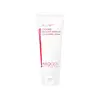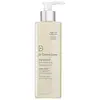What's inside
What's inside
 Key Ingredients
Key Ingredients

 Benefits
Benefits

 Concerns
Concerns

 Ingredients Side-by-side
Ingredients Side-by-side

Water
Skin ConditioningGlycerin
HumectantPotassium Cocoyl Glycinate
Lauramidopropyl Betaine
CleansingHydroxypropyl Starch Phosphate
Acrylates Copolymer
Citric Acid
BufferingSodium Chloride
MaskingPotassium Cocoate
EmulsifyingHydroxyacetophenone
AntioxidantDipropylene Glycol
HumectantCaprylyl Glycol
EmollientCitrus Aurantium Bergamia Fruit Oil
MaskingPanthenol
Skin ConditioningButylene Glycol
Humectant1,2-Hexanediol
Skin ConditioningSodium Alum
AstringentSodium Lactate
BufferingDipotassium Glycyrrhizate
HumectantCentella Asiatica Extract
CleansingHouttuynia Cordata Extract
Skin ConditioningArginine
MaskingCyanocobalamin
Skin ConditioningAspartic Acid
MaskingSapindus Trifoliatus Fruit Extract
Skin ConditioningXanthan Gum
EmulsifyingGlycine
BufferingAlanine
MaskingGluconolactone
Skin ConditioningPortulaca Oleracea Extract
Skin ConditioningSaururus Chinensis Extract
Skin ConditioningMelaleuca Alternifolia Leaf Oil
AntioxidantZinc
AntioxidantCapryloyl Salicylic Acid
ExfoliatingSerine
MaskingValine
MaskingLeucine
Skin ConditioningThreonine
Proline
Skin ConditioningAsiaticoside
AntioxidantMadecassic Acid
Skin ConditioningAsiatic Acid
Skin ConditioningCaprylic/Capric Triglyceride
MaskingPhenylalanine
MaskingHistidine
HumectantArtemisia Vulgaris Extract
Skin ConditioningAloe Barbadensis Leaf Extract
EmollientEthylhexylglycerin
Skin ConditioningAcorus Calamus Root Extract
PerfumingAdansonia Digitata Seed Oil
EmollientCeramide NP
Skin ConditioningGlucose
HumectantHydrogenated Lecithin
EmulsifyingPhospholipids
Skin ConditioningSodium Hyaluronate
HumectantChondrus Crispus Extract
Skin ConditioningMelaleuca Alternifolia Leaf Extract
PerfumingCholesterol
EmollientTocopheryl Acetate
AntioxidantHydroxypropyltrimonium Hyaluronate
Madecassoside
AntioxidantCeramide Ns
Skin ConditioningCeramide As
Skin ConditioningCeramide AP
Skin ConditioningHydrolyzed Hyaluronic Acid
HumectantSodium Acetylated Hyaluronate
HumectantHyaluronic Acid
HumectantPhytosterols
Skin ConditioningSodium Hyaluronate Crosspolymer
HumectantHydrolyzed Sodium Hyaluronate
Skin ConditioningPotassium Hyaluronate
Skin ConditioningWater, Glycerin, Potassium Cocoyl Glycinate, Lauramidopropyl Betaine, Hydroxypropyl Starch Phosphate, Acrylates Copolymer, Citric Acid, Sodium Chloride, Potassium Cocoate, Hydroxyacetophenone, Dipropylene Glycol, Caprylyl Glycol, Citrus Aurantium Bergamia Fruit Oil, Panthenol, Butylene Glycol, 1,2-Hexanediol, Sodium Alum, Sodium Lactate, Dipotassium Glycyrrhizate, Centella Asiatica Extract, Houttuynia Cordata Extract, Arginine, Cyanocobalamin, Aspartic Acid, Sapindus Trifoliatus Fruit Extract, Xanthan Gum, Glycine, Alanine, Gluconolactone, Portulaca Oleracea Extract, Saururus Chinensis Extract, Melaleuca Alternifolia Leaf Oil, Zinc, Capryloyl Salicylic Acid, Serine, Valine, Leucine, Threonine, Proline, Asiaticoside, Madecassic Acid, Asiatic Acid, Caprylic/Capric Triglyceride, Phenylalanine, Histidine, Artemisia Vulgaris Extract, Aloe Barbadensis Leaf Extract, Ethylhexylglycerin, Acorus Calamus Root Extract, Adansonia Digitata Seed Oil, Ceramide NP, Glucose, Hydrogenated Lecithin, Phospholipids, Sodium Hyaluronate, Chondrus Crispus Extract, Melaleuca Alternifolia Leaf Extract, Cholesterol, Tocopheryl Acetate, Hydroxypropyltrimonium Hyaluronate, Madecassoside, Ceramide Ns, Ceramide As, Ceramide AP, Hydrolyzed Hyaluronic Acid, Sodium Acetylated Hyaluronate, Hyaluronic Acid, Phytosterols, Sodium Hyaluronate Crosspolymer, Hydrolyzed Sodium Hyaluronate, Potassium Hyaluronate
Water
Skin ConditioningGlycerin
HumectantSodium Lauroyl Methyl Isethionate
CleansingPropanediol
SolventSodium Cocoamphoacetate
CleansingCocamidopropyl Hydroxysultaine
CleansingDisteareth-75 Ipdi
Glycereth-7 Caprylate/Caprate
EmulsifyingSodium Chloride
MaskingTrisodium Ethylenediamine Disuccinate
PEG-40 Hydrogenated Castor Oil
EmulsifyingMandelic Acid
AntimicrobialGlycolic Acid
BufferingSalix Alba Bark Extract
AstringentPhytic Acid
Potassium Azeloyl Diglycinate
Skin ConditioningCitric Acid
BufferingFarnesol
PerfumingBarosma Betulina Leaf Extract
PerfumingSodium PCA
HumectantSodium Hyaluronate
HumectantTremella Fuciformis Extract
HumectantAloe Barbadensis Leaf Juice
Skin ConditioningBisabolol
MaskingHydrolyzed Soy Protein
HumectantCamellia Sinensis Leaf Extract
AntimicrobialButylene Glycol
HumectantCaprylic/Capric Triglyceride
MaskingDimethyl Isosorbide
SolventAlcohol
AntimicrobialSodium Phytate
Jasminum Officinale Flower/Leaf Extract
MaskingVitis Vinifera Fruit Extract
Skin ConditioningLavandula Angustifolia Flower/Leaf/Stem Extract
MaskingEugenia Caryophyllus Flower Extract
AstringentPolyglyceryl-3 Laurate
EmulsifyingPEG-7 Glyceryl Cocoate
EmulsifyingSodium Hydroxide
BufferingBenzoic Acid
MaskingSodium Benzoate
MaskingPotassium Sorbate
PreservativePhenoxyethanol
PreservativeWater, Glycerin, Sodium Lauroyl Methyl Isethionate, Propanediol, Sodium Cocoamphoacetate, Cocamidopropyl Hydroxysultaine, Disteareth-75 Ipdi, Glycereth-7 Caprylate/Caprate, Sodium Chloride, Trisodium Ethylenediamine Disuccinate, PEG-40 Hydrogenated Castor Oil, Mandelic Acid, Glycolic Acid, Salix Alba Bark Extract, Phytic Acid, Potassium Azeloyl Diglycinate, Citric Acid, Farnesol, Barosma Betulina Leaf Extract, Sodium PCA, Sodium Hyaluronate, Tremella Fuciformis Extract, Aloe Barbadensis Leaf Juice, Bisabolol, Hydrolyzed Soy Protein, Camellia Sinensis Leaf Extract, Butylene Glycol, Caprylic/Capric Triglyceride, Dimethyl Isosorbide, Alcohol, Sodium Phytate, Jasminum Officinale Flower/Leaf Extract, Vitis Vinifera Fruit Extract, Lavandula Angustifolia Flower/Leaf/Stem Extract, Eugenia Caryophyllus Flower Extract, Polyglyceryl-3 Laurate, PEG-7 Glyceryl Cocoate, Sodium Hydroxide, Benzoic Acid, Sodium Benzoate, Potassium Sorbate, Phenoxyethanol
Ingredients Explained
These ingredients are found in both products.
Ingredients higher up in an ingredient list are typically present in a larger amount.
Butylene Glycol (or BG) is used within cosmetic products for a few different reasons:
Overall, Butylene Glycol is a safe and well-rounded ingredient that works well with other ingredients.
Though this ingredient works well with most skin types, some people with sensitive skin may experience a reaction such as allergic rashes, closed comedones, or itchiness.
Learn more about Butylene GlycolThis ingredient is an emollient, solvent, and texture enhancer. It is considered a skin-softener by helping the skin prevent moisture loss.
It helps thicken a product's formula and makes it easier to spread by dissolving clumping compounds.
Caprylic Triglyceride is made by combining glycerin with coconut oil, forming a clear liquid.
While there is an assumption Caprylic Triglyceride can clog pores due to it being derived from coconut oil, there is no research supporting this.
Learn more about Caprylic/Capric TriglycerideCitric Acid is an alpha hydroxy acid (AHA) naturally found in citrus fruits like oranges, lemons, and limes.
Like other AHAs, citric acid can exfoliate skin by breaking down the bonds that hold dead skin cells together. This helps reveal smoother and brighter skin underneath.
However, this exfoliating effect only happens at high concentrations (20%) which can be hard to find in cosmetic products.
Due to this, citric acid is usually included in small amounts as a pH adjuster. This helps keep products slightly more acidic and compatible with skin's natural pH.
In skincare formulas, citric acid can:
While it can provide some skin benefits, research shows lactic acid and glycolic acid are generally more effective and less irritating exfoliants.
Most citric acid used in skincare today is made by fermenting sugars (usually from molasses). This synthetic version is identical to the natural citrus form but easier to stabilize and use in formulations.
Read more about some other popular AHA's here:
Learn more about Citric AcidGlycerin is already naturally found in your skin. It helps moisturize and protect your skin.
A study from 2016 found glycerin to be more effective as a humectant than AHAs and hyaluronic acid.
As a humectant, it helps the skin stay hydrated by pulling moisture to your skin. The low molecular weight of glycerin allows it to pull moisture into the deeper layers of your skin.
Hydrated skin improves your skin barrier; Your skin barrier helps protect against irritants and bacteria.
Glycerin has also been found to have antimicrobial and antiviral properties. Due to these properties, glycerin is often used in wound and burn treatments.
In cosmetics, glycerin is usually derived from plants such as soybean or palm. However, it can also be sourced from animals, such as tallow or animal fat.
This ingredient is organic, colorless, odorless, and non-toxic.
Glycerin is the name for this ingredient in American English. British English uses Glycerol/Glycerine.
Learn more about GlycerinChances are, you eat sodium chloride every day. Sodium Chloride is also known as table salt.
This ingredient has many purposes in skincare: thickener, emulsifier, and exfoliator.
You'll most likely find this ingredient in cleansers where it is used to create a gel-like texture. As an emulsifier, it also prevents ingredients from separating.
There is much debate on whether this ingredient is comedogenic. The short answer - comedogenic ratings don't tell the whole story. Learn more about comegodenic ratings here.
The concensus about this ingredient causing acne seems to be divided. Research is needed to understand if this ingredient does cause acne.
Scrubs may use salt as the primary exfoliating ingredient.
Learn more about Sodium ChlorideSodium Hyaluronate is hyaluronic acid's salt form. It is commonly derived from the sodium salt of hyaluronic acid.
Like hyaluronic acid, it is great at holding water and acts as a humectant. This makes it a great skin hydrating ingredient.
Sodium Hyaluronate is naturally occurring in our bodies and is mostly found in eye fluid and joints.
These are some other common types of Hyaluronic Acid:
Learn more about Sodium HyaluronateWater. It's the most common cosmetic ingredient of all. You'll usually see it at the top of ingredient lists, meaning that it makes up the largest part of the product.
So why is it so popular? Water most often acts as a solvent - this means that it helps dissolve other ingredients into the formulation.
You'll also recognize water as that liquid we all need to stay alive. If you see this, drink a glass of water. Stay hydrated!
Learn more about Water